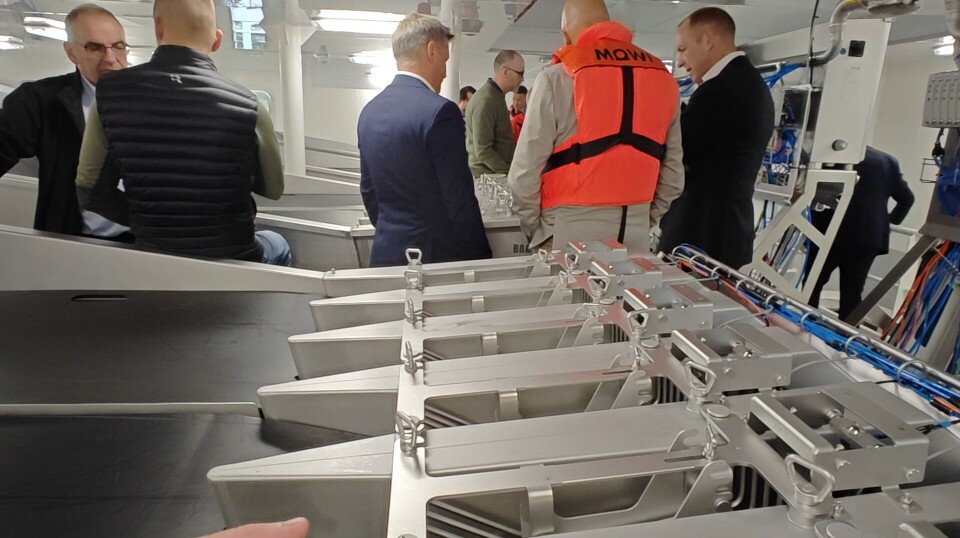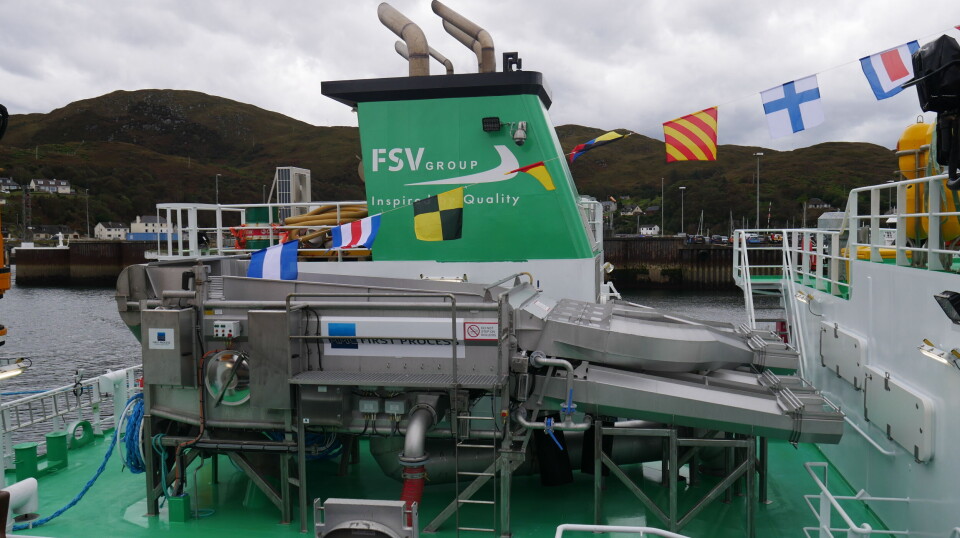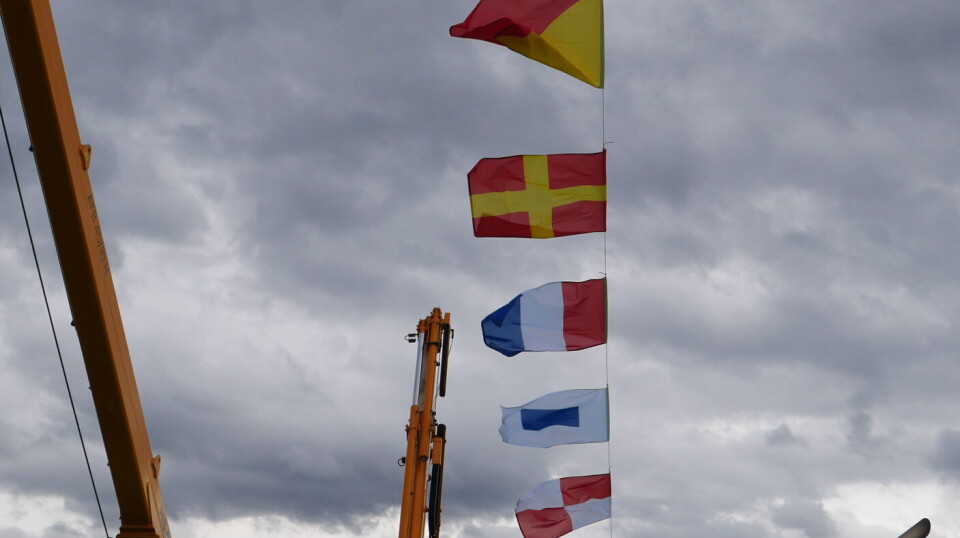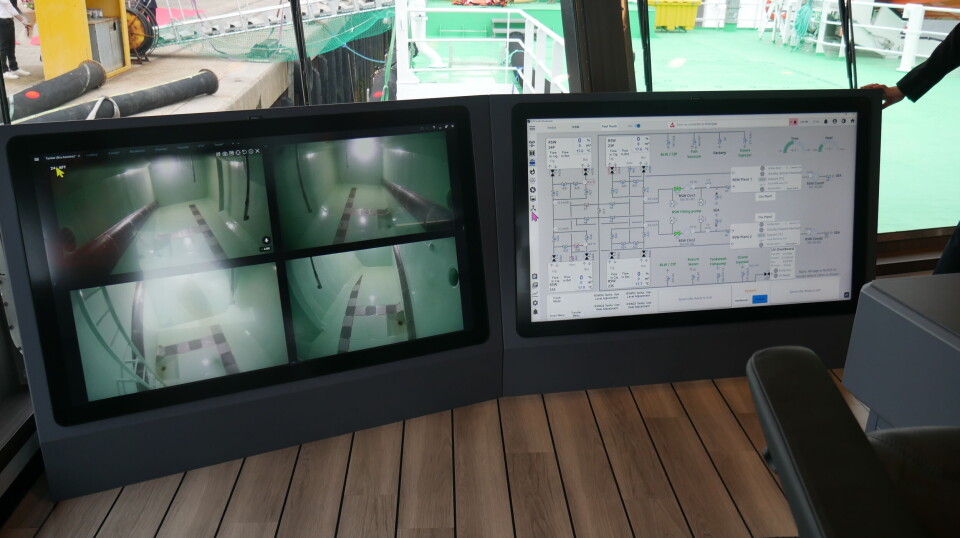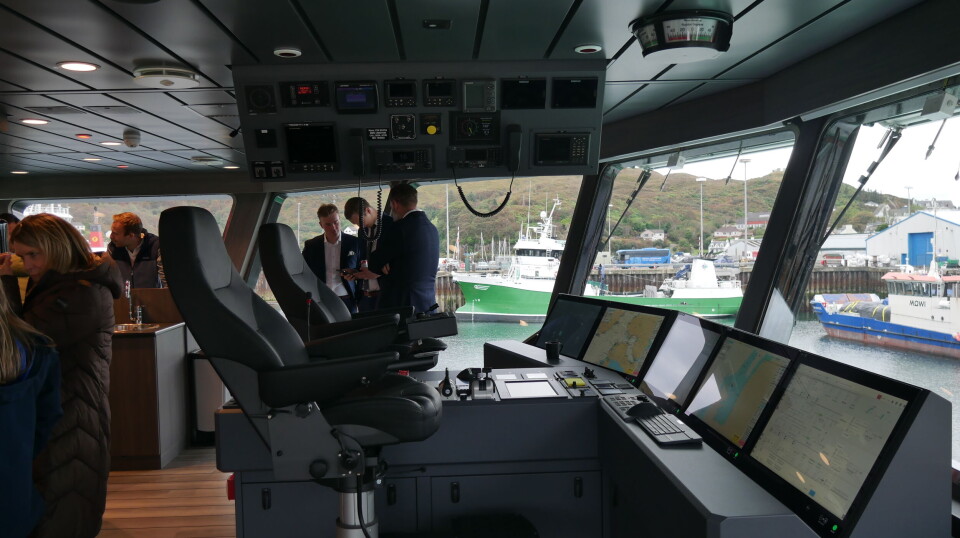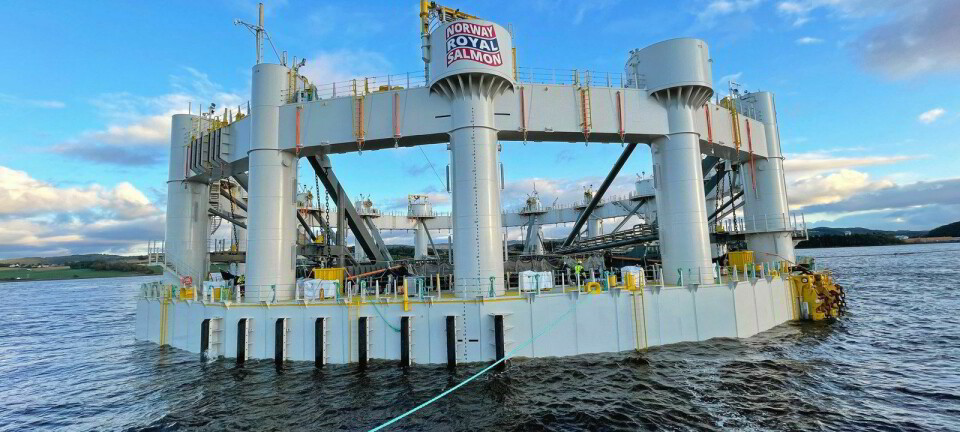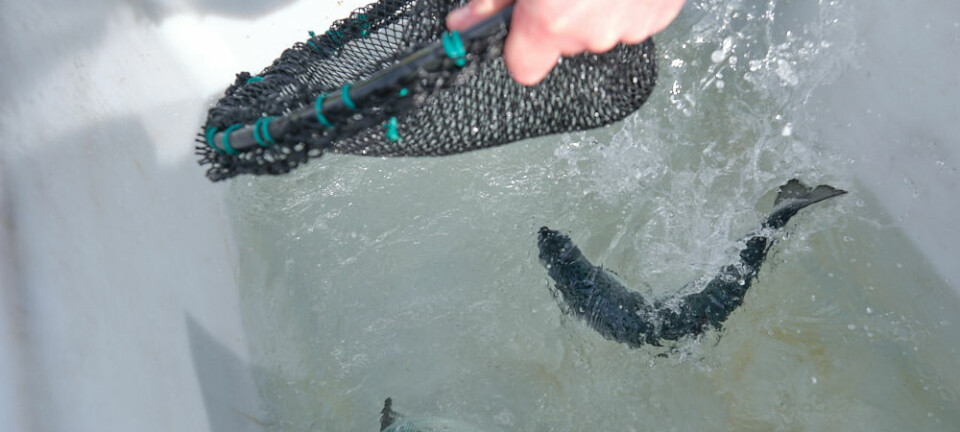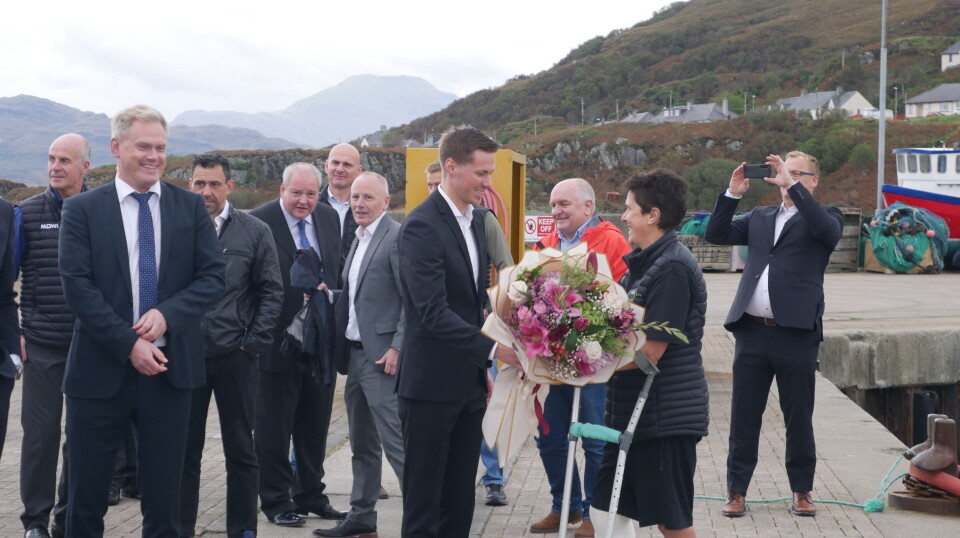
'I can’t wait to see her at my fish farm'
Mowi site manager honoured to be named godmother for new harvest vessel Scotia
Mowi fish farm manager Rosie Curtis is a crofter, firefighter, coastguard, community councillor, and student of the bagpipes.
And she’s now added one more string to her bow: godmother of the state-of-the-art harvest vessel FSV Scotia, which was formally named at Mallaig on Wednesday.
Mowi’s Renaissance woman arrived for the ceremony on crutches, with a leg in a plaster cast due to an injury incurred while “arguing with a black-faced tup”.

Honoured to be godmother
“I’ve been fish farming 28 years, always with what was Marine Harvest and is now Mowi. I wouldn’t change it for the world,” said Curtis, who manages the Maclean’s Nose site at Ardnamurchan.
“It’s an honour to be godmother of the Scotia. I can’t wait to see her out at Maclean’s Nose. We’ve come a long way in fish farming, and this is yet again going to improve what we’re doing.
“We start harvesting at the end of this month, so we will hopefully have the new boat out.”
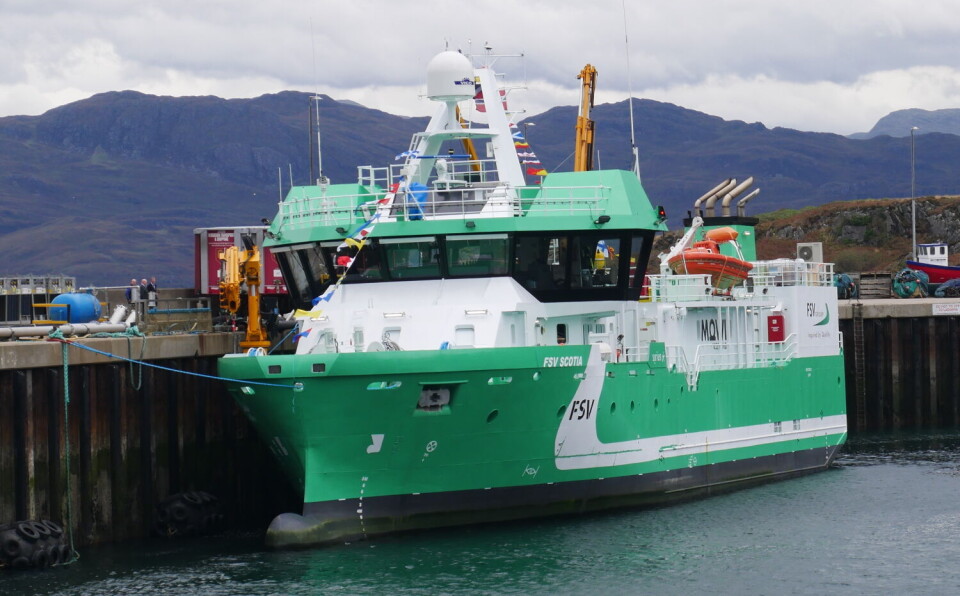
The FSV Scotia was delivered to its owner, FSV – now part of Trident Aqua Services – by shipbuilder Fitjar Mekaniske Verksted in May, and began working on a long-term contract for Mowi Scotland around three months ago. In that time it has harvested around 9,000 tonnes (round weight) of salmon.
The 50-metre vessel is built around a stun-and-bleed factory supplied by Baader, and can humanely slaughter up to 100 tonnes of salmon per hour. It has four wells which together have capacity for up to 350 tonnes of fish which are quickly cooled to the optimal temperature with refrigerated sea water.
The Scotia has twin propellers and large thrusters, which makes it very workable in challenging conditions. It can also operate with only the port propeller at fish farms, to reduce the danger of damaging nets.
The vessel also has a roll reduction tank placed above the wheelhouse. The tank, partially filled with water, reduces roll movement, as stability is important to maintain the quality of fish during both harvest and dead haul to Mallaig, where the cargo is loaded into Ferguson Transport’s food-grade tankers and driven 42 miles to Mowi’s processing plant at Blar Mhor, Fort William.
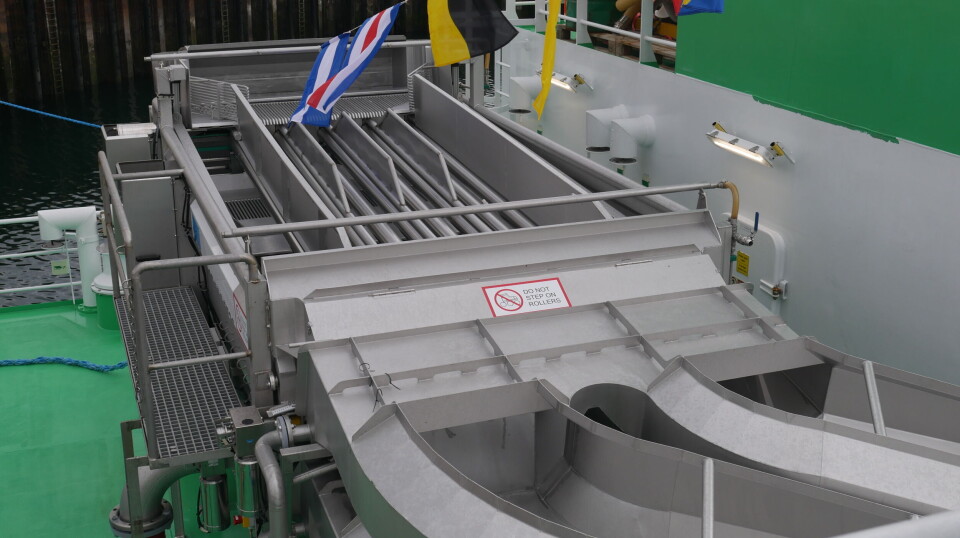
At a fish farm, salmon are pumped aboard the Scotia with a 16-inch Seaquest live fish pump that has a capacity of 120 tonnes per hour. Fish are then passed through an MMC grading system, which returns cleaner fish to the pen and guides large salmon into one of two channels, and smaller fish into the other. The channels are covered to reduce stress, and end in a sea water pool that allows the fish to swim into the Baader 101 machines, where they are stunned percussively and bled.
The stunned fish are channelled though a broad pipe to an inspection conveyer on the next level down, where they bleed out for 30 seconds before being transferred to the wells and stored in refrigerated sea water. Any fish which were not adequately stunned are manually guided into a back-up stun-and-bleed unit at the end of the conveyor.
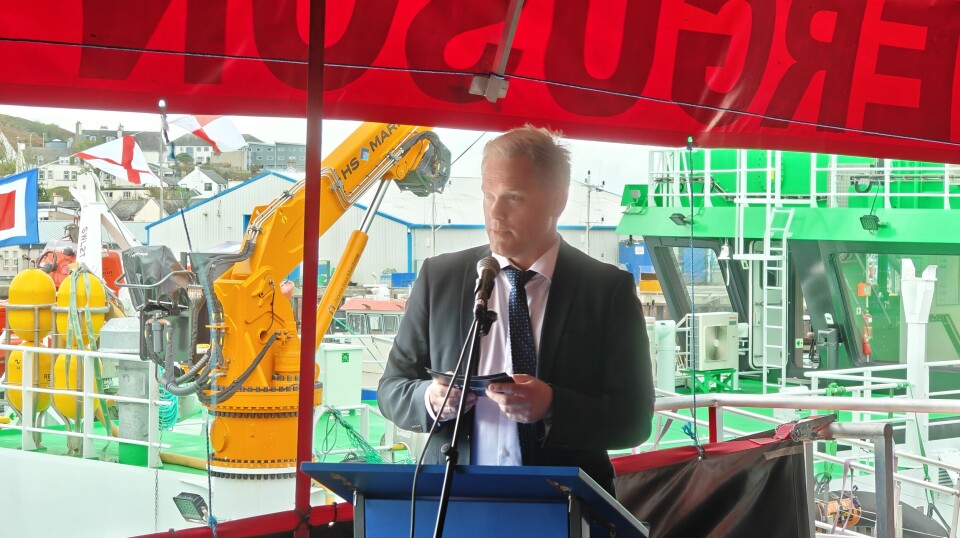
“Today is a day of celebration for everyone at Trident,” said Trident Aqua Services chief executive Arild Aasmyr in a speech before Curtis smashed the champagne to name the Scotia. “Our employees, our board members and our chareholders have invested significant effort and resources to make this vessel a reality and I want to extend my sincere thanks to everyone who has contributed to this project.
“Mowi set a really high standard and expect the best, the top quality. Mowi continues to challenge us and help Trident grow and to improve and we are deeply grateful for the trust placed in us.
“Trident’s ambition is to set a new standard for harvest vessels in the industry, with a strong focus on fish welfare, biosecurity, and premium quality. We have combined cutting-edge design and technology to meet these goals.”
He thanked the vessel’s equipment suppliers and ship designer Sirius Design and Integration, “who from the very beginning focused on the heart of the vessel, the fish factory, ensuring that harvest operations are hygenic, clean, and efficient, while safeguarding fish welfare and product quality”.
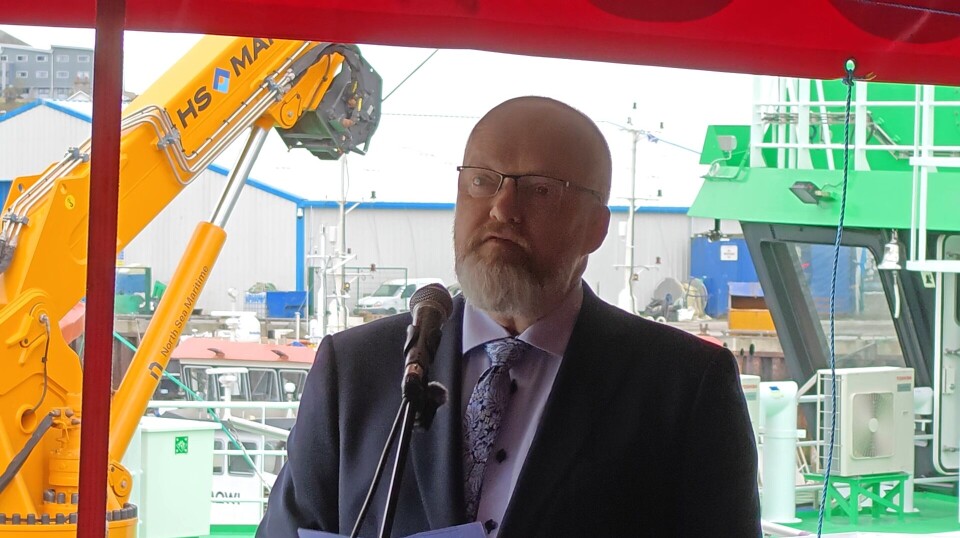
Nils Andreas Brekke, shipyard manager for shipbuilder Fitjar Mekaniske Verksted, said: “This ship is a testament to what can be achieved when tradition, innovation, and international collaboration come together.
“New build 56 was contracted on May 9, 2023, and delivered to FSV – now Trident – exactly two years later.
“To the crew who will sail her, may she be your steadfast companion, may she shelter you in storms, carry you safely across the oceans, and return you home with stories worth telling.”
